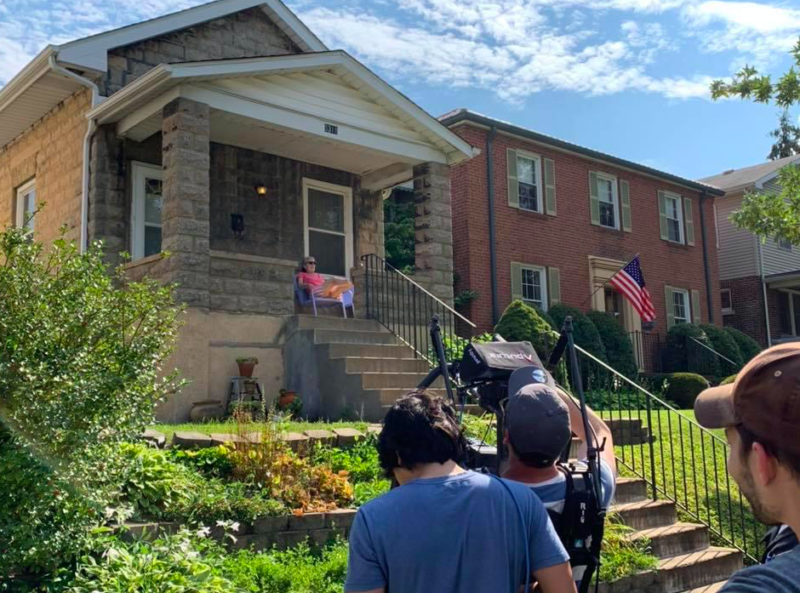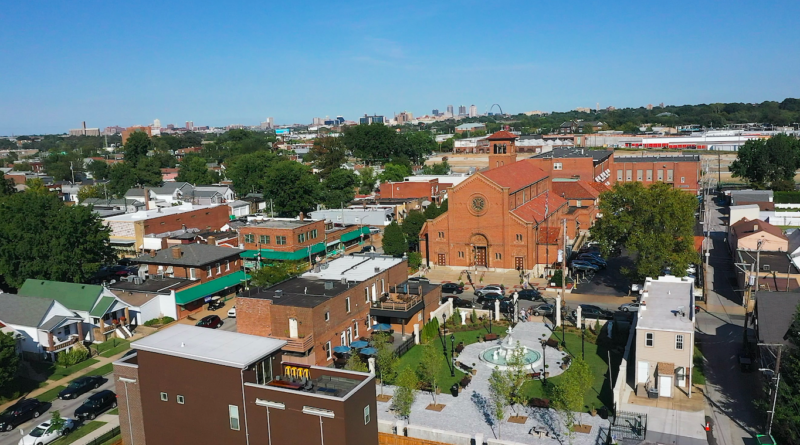INTERVIEW: ‘America’s Last Little Italy: The Hill’ documents the legacy of a St. Louis neighborhood
Photo: America’s Last Little Italy: The Hill documents the residents of an Italian-American neighborhood in St. Louis. Photo courtesy of filmmaker / Provided by press agent with permission.
America’s Last Little Italy: The Hill, a new film directed and produced by Joseph Puleo, documents the many stories that can be found in The Hill, an Italian-American enclave in the western part of St. Louis. Bordered by I-44, the Little Italy section of this metropolitan area fascinates the filmmaker and inspired him to take out the camera and start talking to people. His efforts have been met with success: America’s Last Little Italy has played multiple PBS stations and is now available on Amazon Prime to rent or buy.
“I have a familial connection to The Hill,” Puleo said in a recent phone interview. “I have multiple family members that lived on The Hill and did while I was growing up, so being an Italian-American myself and being from St. Louis, The Hill is extremely near and dear to my heart.”
As a child, Puleo would visit The Hill and head into the Italian shops along its city streets. He would also stop in and say hello to his grandparents, but other than these experiences, he didn’t know too much about the neighborhood’s history. Then he met up with Rio Vitale, who would become an executive producer of the documentary. Vitale published a book on The Hill, and he went to Puleo with the idea of making a film.
“At the time, the neighborhood itself had lost a lot of these lifelong Hill members, these elderly residents of the neighborhood, and so Rio really was stressing the timeliness,” the director remembered. “We need to get these interviews while we still can. … Generally you would try to have a long pre-production period where I would be able to go through and research and fundraise and do all those things that you would in pre-production.”
For this project, Puleo decided to work faster. He had attended film school, and this was going to be his debut feature-length film. He gathered together equipment and “dug in” because there was no time to waste, so he went to The Hill and started working nonstop.
“If there was a Hill resident that was over the age of 70-75 years old, we were going to interview them, so for an entire summer, we interviewed 30 people over the age of 80,” he said. “All in we interviewed 70 people with 55 making the cut — I think that was the final number. So we just spent three to four months every day going out and getting interviews. Sometimes we’d get two, three interviews in one day, just trying to get them as quickly as possible. Every time I watch the film I’m so glad we did because at the end of the film you see the ‘In Memoriam,’ and I think at last count we lost 11 of the elderly people that we interviewed just in this two-year period of us making this film.”
Puleo said the experience of making America’s Last Little Italy: The Hill was incredibly gratifying. He wanted to shed light on the neighborhood and its longtime residents, but he also knew that claiming this St. Louis neighborhood as the country’s last Little Italy was controversial. He admitted there was pushback on the title. After all, several cities have a designated Little Italy, perhaps most famous being in New York City.
“When people actually sit down and watch the film, I think those last 10-15 minutes really put the point home,” Puleo said. “OK, it’s not just that it’s a Little Italy; it’s an actual neighborhood, and that’s what separates it from all these other ones. Just being able to show that this neighborhood still exists with that ethnic identity and that rich tradition, it’s been remarkable for us.”
The filmmaker added: “The Hill is like a time capsule. It’s very Old World. The biggest thing that’s separating The Hill from these other Little Italy’s is a lot of them have been commercialized. There’s not a Starbucks on The Hill. These are all mom ‘n’ pop-owned Italian businesses, Italian restaurants, shops, bakeries. There’s an auto parts store.”
Puleo said that The Hill is essentially a city within a city, a walkable neighborhood that is self-sufficient. If a resident needs food, they head to the local grocery store on the corner. The children walk down the block to St. Ambrose Roman Catholic School. In the morning, many people walk to the local coffee shops for some espresso and an Italian bakery treat.
“I mean, you go down there on the weekends, and you really see it come to life because that’s when everybody throughout the St. Louis area comes and visits The Hill generally,” the director said. “So there’s a part in the film, obviously this is pre-COVID, where one of the restaurant owners said on Saturday he can’t walk because there’s too many people. It’s the place to be.”
By John Soltes / Publisher / John@HollywoodSoapbox.com
America’s Last Little Italy: The Hill, directed and produced by Joseph Puleo, is now available to rent and own on Amazon Prime. Click here for more information.



Loved living on the Hill. Lived at 2844 Dalton (rented) for a couple of years. Owned by Mike Acinelli Played in pool league for the Bar The Point After on the corner.